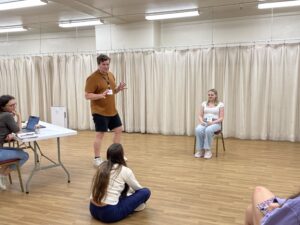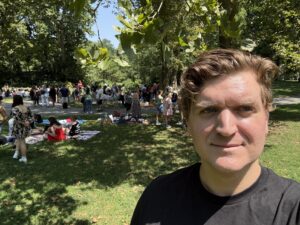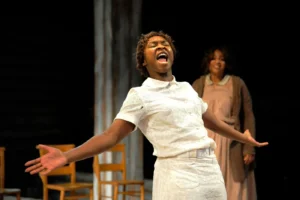Imagine this: an alien lands on Earth and asks you to explain singing. It asks you how to decide when something is good/pretty/beautiful/stylistically correct. Where would you even start?
It’s a can of worms, right? I mean, think about it, the way we’d describe beautiful or optimal sound making would involve a lot of personal bias and taste.
What if, instead of panicking about whether or not every single sound that we produced was “pretty”, we eliminated our emotional attachment and decided that singing is just making weird noises on pitch?
We all have an individual vocal bag of tricks. Instead of worrying that we’ve made a “BAD” or “WRONG” sound (aside from if it’s painful- if it’s painful, stop and see a teacher or an ENT), consider that singing might just be like home improvement.
Sometimes, you’re trying to decipher the wordless IKEA manual, and you pull out a wrench when really you need a hammer.
It’s the same for singing. Sometimes we hit a note with a full throttle belt when a round head dominant mix might give us more of the stylistic bang for our buck that we’re seeking. It’s not bad singing technique, it’s just the wrong choice for the song at that moment.
Our throat is also our emotional chakra. If we’re worried about all of the “bad” and “wrong” sounds we’re making, our chakra is closed, our throat is tight, and our anxiety is through the roof. And on the physiology side of things, if we’re experiencing anxiety, our false vocal folds are constricted, the strap muscles in our neck are turned on, and our jaw is tight and tense. None of this makes for easy singing!
Remove the emotional attachment from your singing and instead seek to get curious about the tools you’re using as we construct our vocal furniture.
The sounds you make don’t define your singing technique- they’re supposed to be weird! And sometimes we love the weird sound that you choose and sometimes there’s one we may like more if we can find it at the bottom of the toolbox. Reconfiguring your mental state will not only free up your instrument, your body, and your auditions, but it will also encourage you to explore the endless possibilities that your voice and artistry possess.
About the Author

Jenna Pastuszek is a bicoastal actor, singer, voiceover artist, educator, and voice teacher. Theatre credits include the North American premiere of Elvis: A Musical Revolution (U.S. National Tour), Diner and Because of Winn Dixie (pre-Broadway runs), 44: The Unofficial Obama Musical (Center Theatre Group, Los Angeles), and It’s All Your Fault, Tyler Price (The Hudson Theatre, Los Angeles). Off and Off-Off-Broadway credits include various roles in New York City venues. She has sung the National Anthem at major events across the U.S., including for Major League Baseball.
Jenna is the creator, producer, and star of the solo shows GET HAPPY! An Evening Celebrating the World’s Greatest Entertainer, Judy Garland and ME, MYSELF & BARBRA, which have been performed at venues including Paper Mill Playhouse (Millburn, NJ), Bucks County Playhouse (New Hope, PA), Westport Country Playhouse (Westport, CT), The Overture Center (Madison, WI), and The Yale Club (New York, NY).
As a voiceover artist, she is a member of the Pandora Radio roster and has voiced national campaigns for brands including Starbucks, Pepsi, Amazon Alexa, KIND Bar, Target, IKEA, and Crest.
Jenna is Co-Founder of Innovative Voice Studio, where she trains performers appearing in &Juliet, Hamilton, The Phantom of the Opera, Chicago, Hadestown, Wicked, Ain’t Too Proud, SIX, Fiddler on the Roof, Hello, Dolly!, West Side Story, and more. She has held teaching positions at USC, NYU, The American Academy of Dramatic Arts, UArts, and Oakland University.




